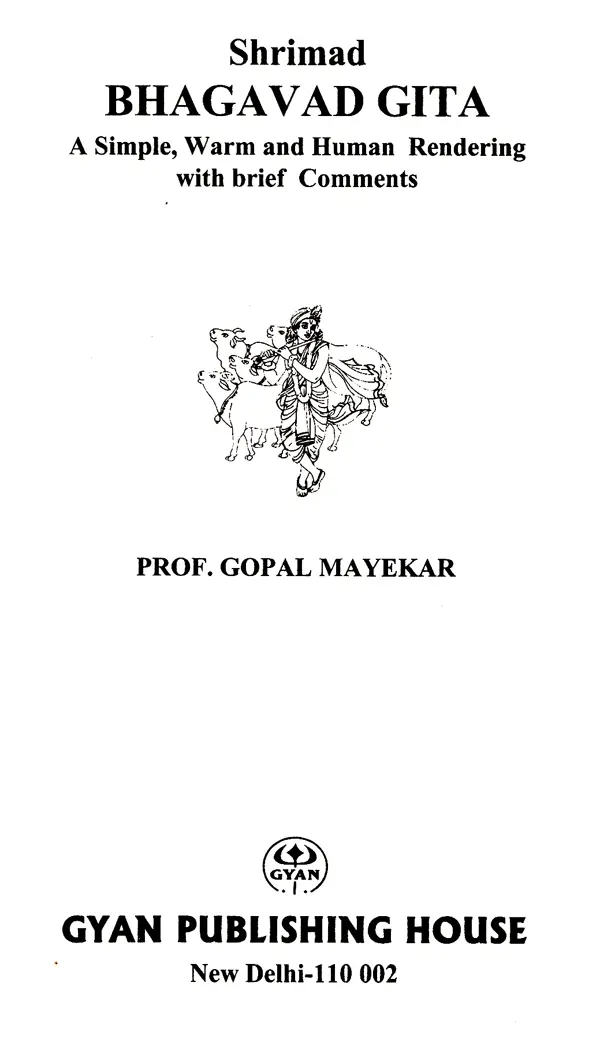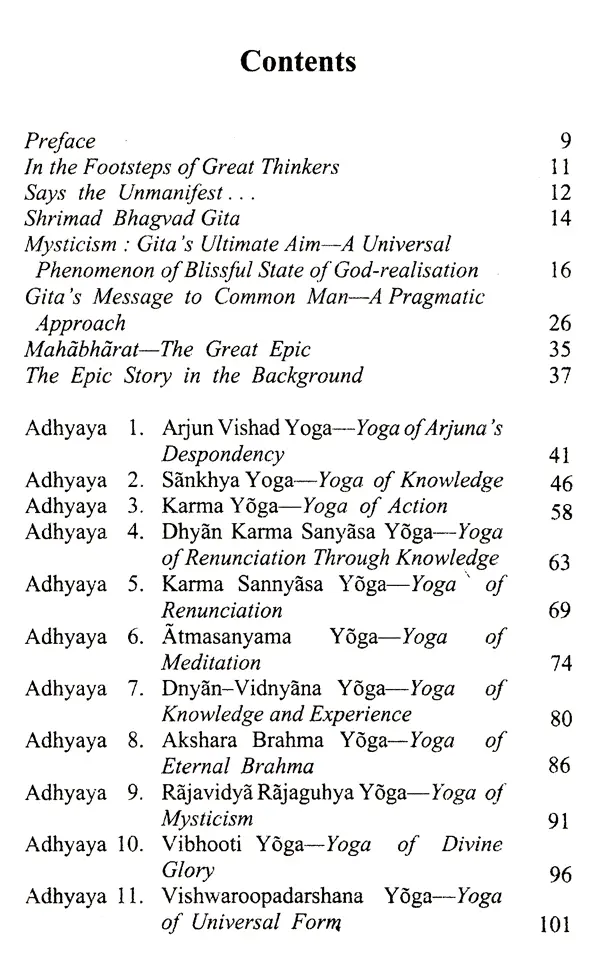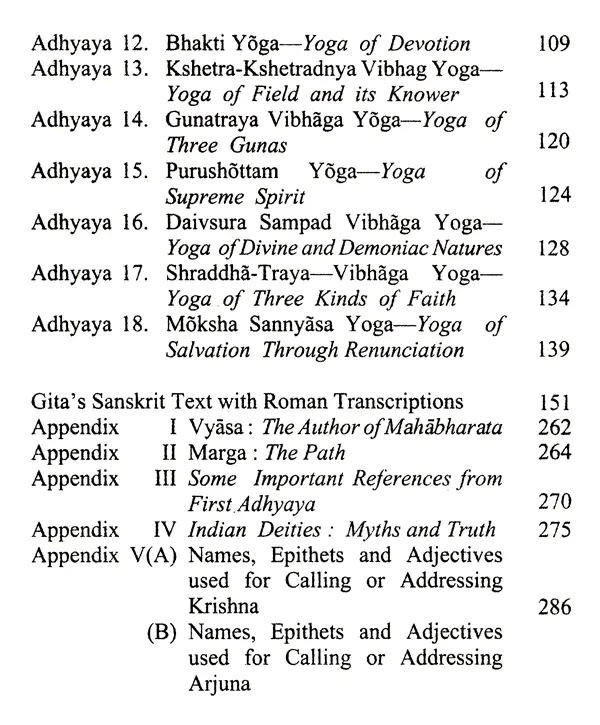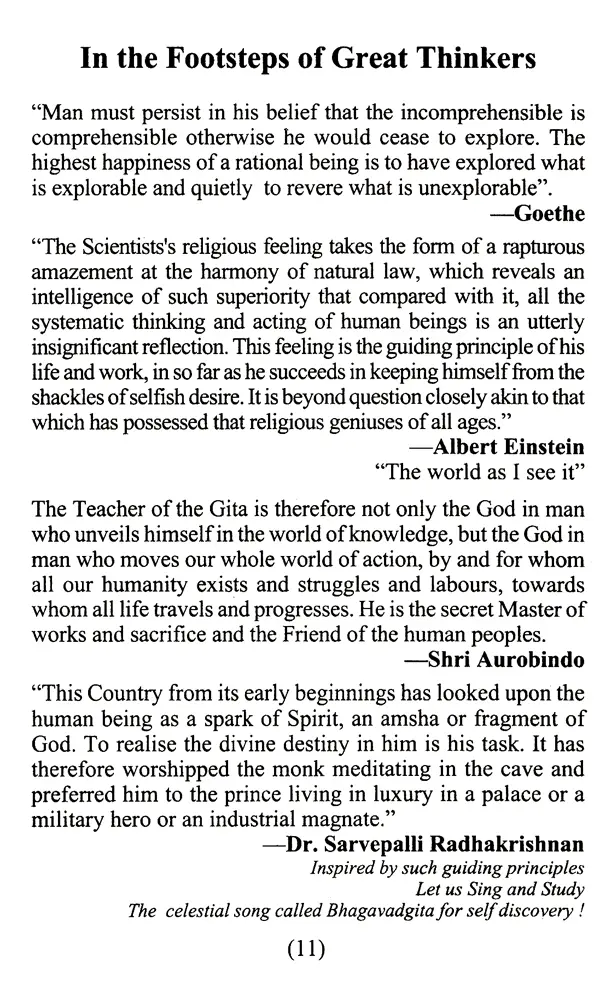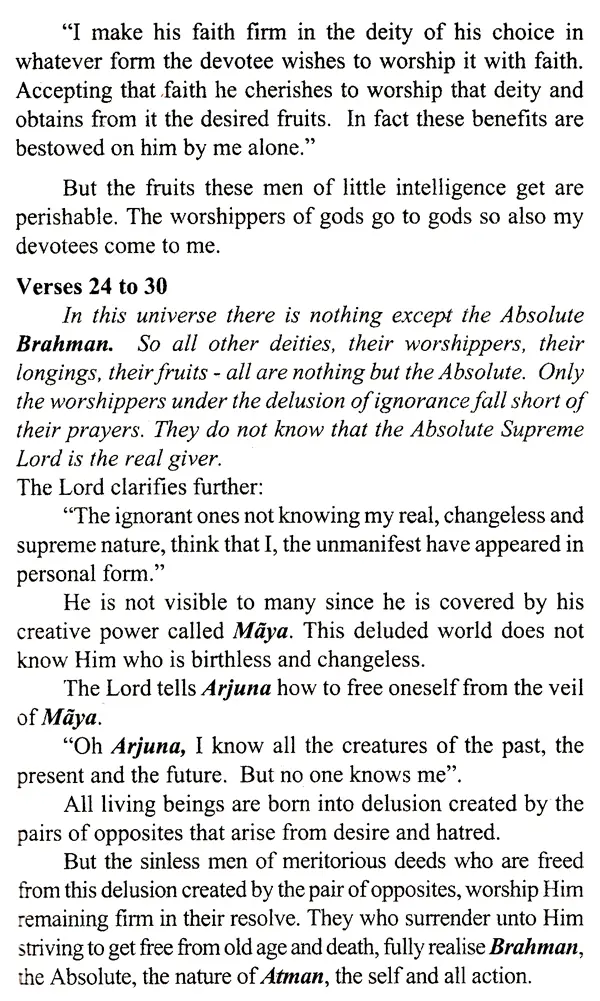
Shrimad Bhagavad Gita: A Simple, Warm and Human Rendering with Brief Comments
Book Specification
| Item Code: | UAM838 |
| Author: | Prof. Gopal Mayekar |
| Publisher: | Gyan Publishing House, New Delhi |
| Language: | English |
| Edition: | 2003 |
| ISBN: | 8121208009 |
| Pages: | 287 |
| Cover: | HARDCOVER |
| Other Details | 8.90 X 5.90 inch |
| Weight | 580 gm |
Book Description
Since the Gita philosophy is nowadays becoming strange to our own people, it can be safely presumed that this humble trial will also be useful to them, especially to Indian youth who have lost their identity in the present day turmoil.
A poet by nature, he is also an eloquent speaker on spiritual literature and has to his credit scores of public discourses on the Dnyaneshvari, the Gita and the great Hindu Epics. His new, pragmatic as well as philosophical approach is best appreciated in this warm and intensely human rendering of the Divine Song, "Bhagavad Gita".
Original text of the Gita is a part of the epic Mahabharata forming chapters 25 to 42 of Bhishma-parvan and its writer sage Vyasa has adopted a literary strategy in presenting this great treatise in the midst of a terrible war. Sanjaya, Dhritarashtra's charioteer is a medium through whom the dialogue between Krishna and Arjuna is reported. Sanjaya experiences divinity in Krishna and presents a verbatim report of his utterings. In my rendering, instead of first person I have used third person narration to facilitate better understanding of the text. At selected places, however, first person narration is retained for special emphasis. Wherever possible short comments are added (shown in italic) to explain the thought or to connect the thoughts. The Gita-verses also are grouped topic wise for convenient reading.
Selected explanatory notes are added, some in the beginning and some at the end as annexures to facilitate the readers to have proper perspective for better understanding of the greatness of the divine song.
In my search of right interpretation and logical meaning I was guided by the great works of Dr. Sarvapalli Radhakrishnan, the teacher-philosopher of the twentieth century and saint Dnyaneshwara, the poet-philosopher of the thirteenth century. Lokmanya Tilak and Vivekananda also came to my rescue whenever I was puzzled. They all have become my perennial source in the journey of self discovery.
The book will remain incomplete if I do not mention the service and advice rendered to me by Mr. C. Radhakrishnan who not only corrected the manuscript but suggested valuable improvements to make the book attractive and perfect.
At the last but not the least let me record with gratitude that Prof. Mahesh Vengurlekar was the real inspirer of this book. He was instrumental in preparing the manuscript and its beautiful presentation. Still he is not happy. He wants me to write a book in Marathi so that the journey becomes complete. I have no other choice than to fulfil his wish, sooner or the later.
**Contents and Sample Pages**
